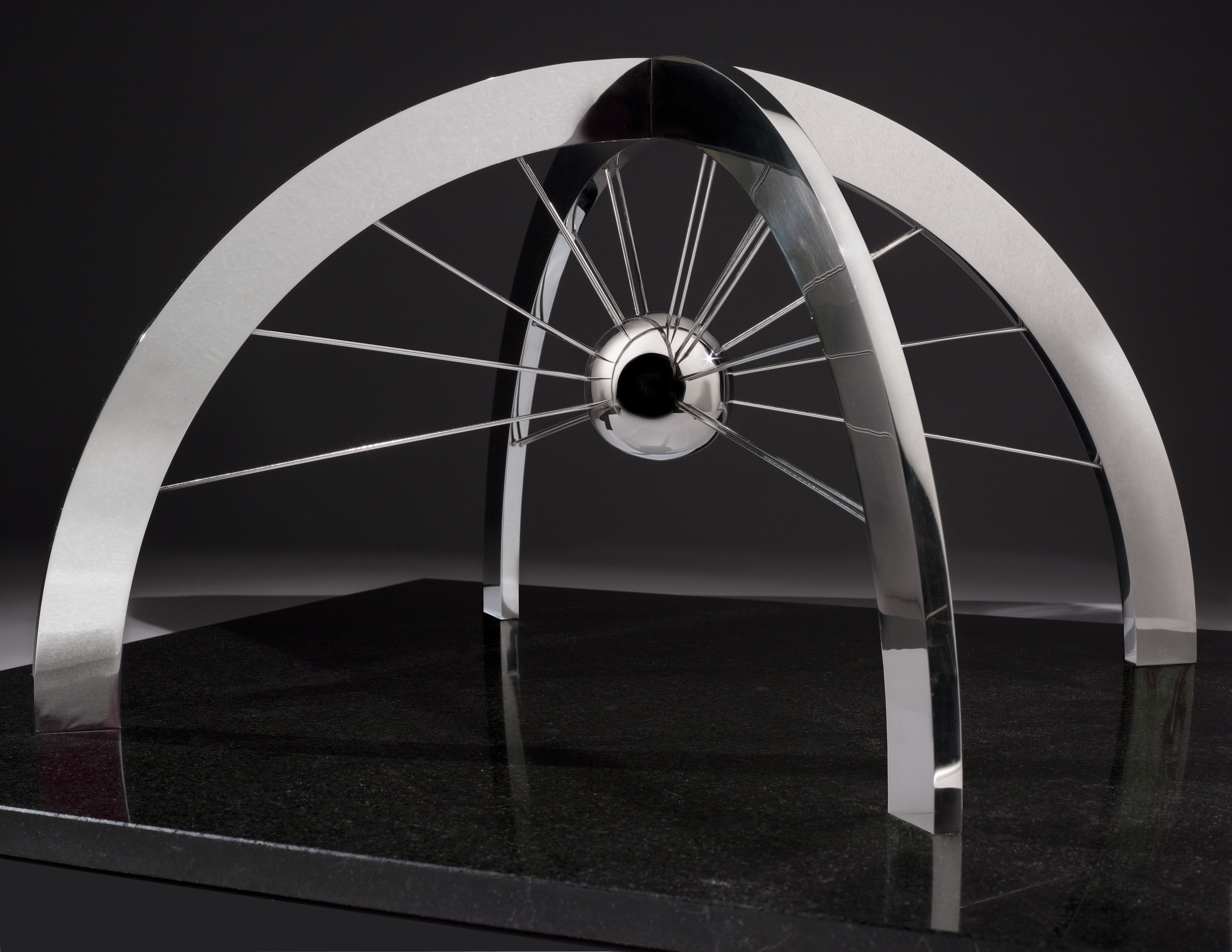National Air and Space Museum’s 2023 Michael Collins Trophy Awarded to Bill Anders and the James Webb Space Telescope Team
The Smithsonian’s National Air and Space Museum awards its Michael Collins Trophy annually for Lifetime and Current Achievements in aerospace science and technology. The 2023 recipients are Bill Anders for Lifetime Achievement and the James Webb Space Telescope Team for Current Achievement; they will receive their awards at a ceremony this spring at the museum’s Steven F. Udvar-Hazy Center in Chantilly, Virginia.
Established in 1985, the award recognizes outstanding achievements in the fields of aerospace science and technology and their history. Trophy winners receive a miniature version of “The Web of Space,” a sculpture by artist John Safer. The award (previously known as the National Air and Space Museum Trophy) was renamed in 2020 to recognize Collins’ contributions to aerospace and his service to the museum as director from 1971-1978, a critical time in its evolution.
“The 2023 Collins Trophy recipients have helped humans understand their place on this Earth,” said Chris Browne, John and Adrienne Mars Director of the museum. “Bill Anders not only dedicated his life to aerospace but also took the iconic Earthrise photograph that changed our understanding of this planet forever. The James Web Telescope has likewise given us new perspectives on the universe. We’re so pleased to present this prestigious award to two most deserving recipients.”
2023 Michael Collins Trophy Recipients
William A. Anders has dedicated his life to aerospace, first as a pilot, then as an astronaut, and eventually in the private and non-profit sectors. He has served his country in the U.S. Air Force, as an ambassador and as a civil servant. Anders and his wife, Valerie, have also given their time and generous support to numerous aerospace and research efforts. Among his many achievements, Anders’ ability to connect spaceflight with the human experience here on Earth could be considered his greatest. Anders became one of the first people to circumnavigate another planet and see the entire Earth from space. As an astronaut on Apollo 8, he was responsible for photographing and documenting the lunar farside, which had not been seen by humans until that point. During the fourth orbit of the Moon, Anders took the famous Earthrise photograph, which is considered one of the most important images of the 20th century. “We came all this way to explore the Moon, and the most important thing is that we discovered the Earth,” he said.
The James Webb Space Telescope (JWST) is the largest, most powerful space telescope ever deployed. With its infrared wavelength coverage and greatly improved sensitivity, astronomers are collecting data that complement and extend the discoveries of the Hubble Space Telescope. Astronomers use JWST’s large-segmented mirror and advanced instrumentation to study nearly every phase of the history of our universe, ranging from the birth of the first galaxies and the formation of planets capable of supporting life, to the evolution of our own solar system. The scientific discoveries and implications gleaned from JWST data have already begun to change how astronomers understand the evolution of galaxies and the composition of other planets.
Just as the Hubble Space Telescope brought about a great leap in space science, through its innovative design and ability to overcome engineering challenges, JWST will lead space science into another phase of increased understanding of the universe. The JWST is an international collaboration between NASA, the European Space Agency and the Canadian Space Agency, in cooperation with several industry partners. Over 1,000 people in more than a dozen countries designed, built and operate JWST.
More information about the Michael Collins Trophy and a complete list of past winners are available at https://airandspace.si.edu/michael-collins-trophy.
The Michael Collins Trophy event is made possible through the support of The Claude Moore Charitable Foundation, Leidos, Leonardo US Corporation, National Air Traffic Controllers Association, Pratt & Whitney and Sierra Nevada Corp.
The National Air and Space Museum in Washington, D.C., is located at Sixth Street and Independence Avenue S.W. The Steven F. Udvar-Hazy Center is located in Chantilly, Virginia, near Washington Dulles International Airport.
# # #
SI-387-2022
Alison Wood
202-633-2376
Amy Stamm
202-633-2392

